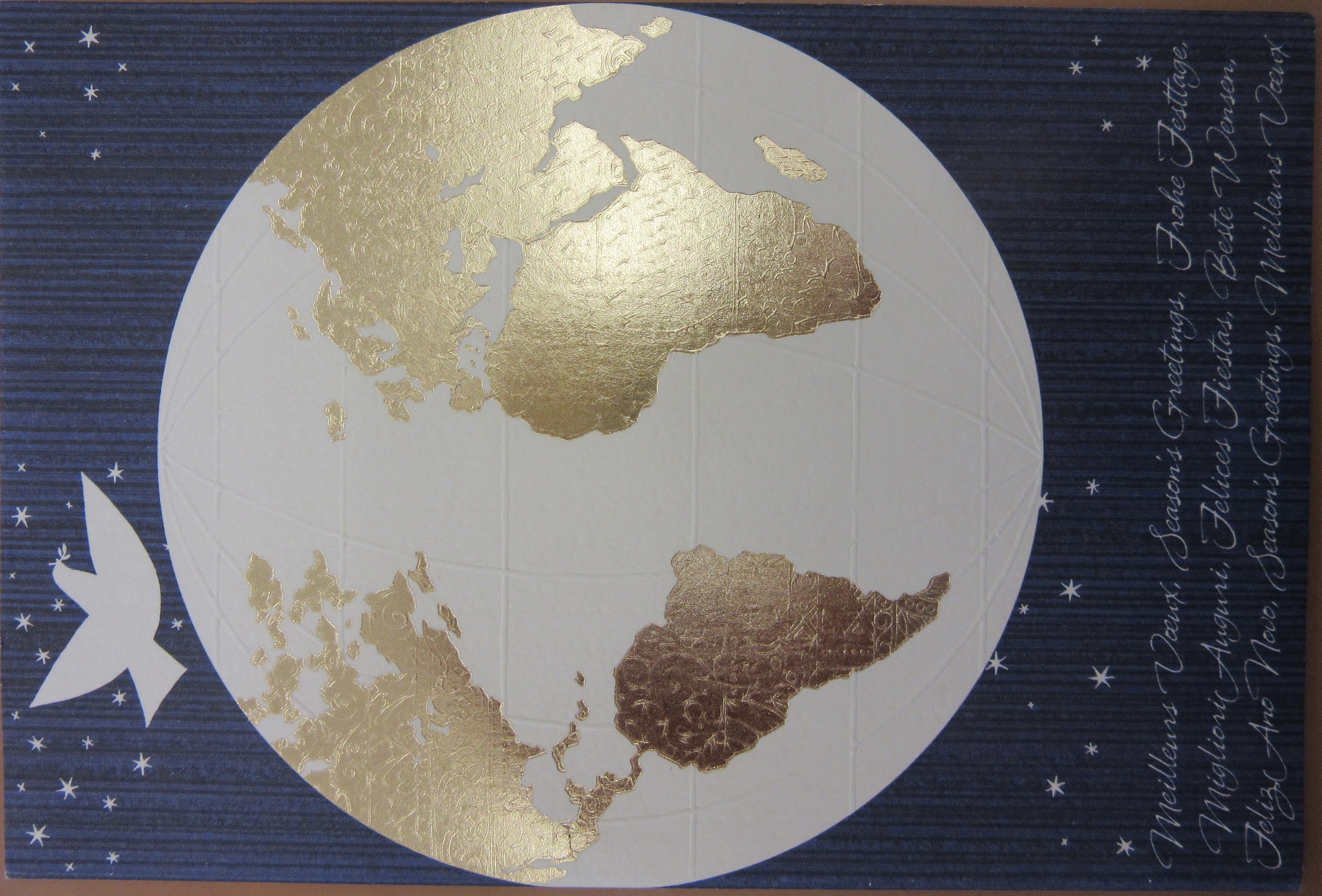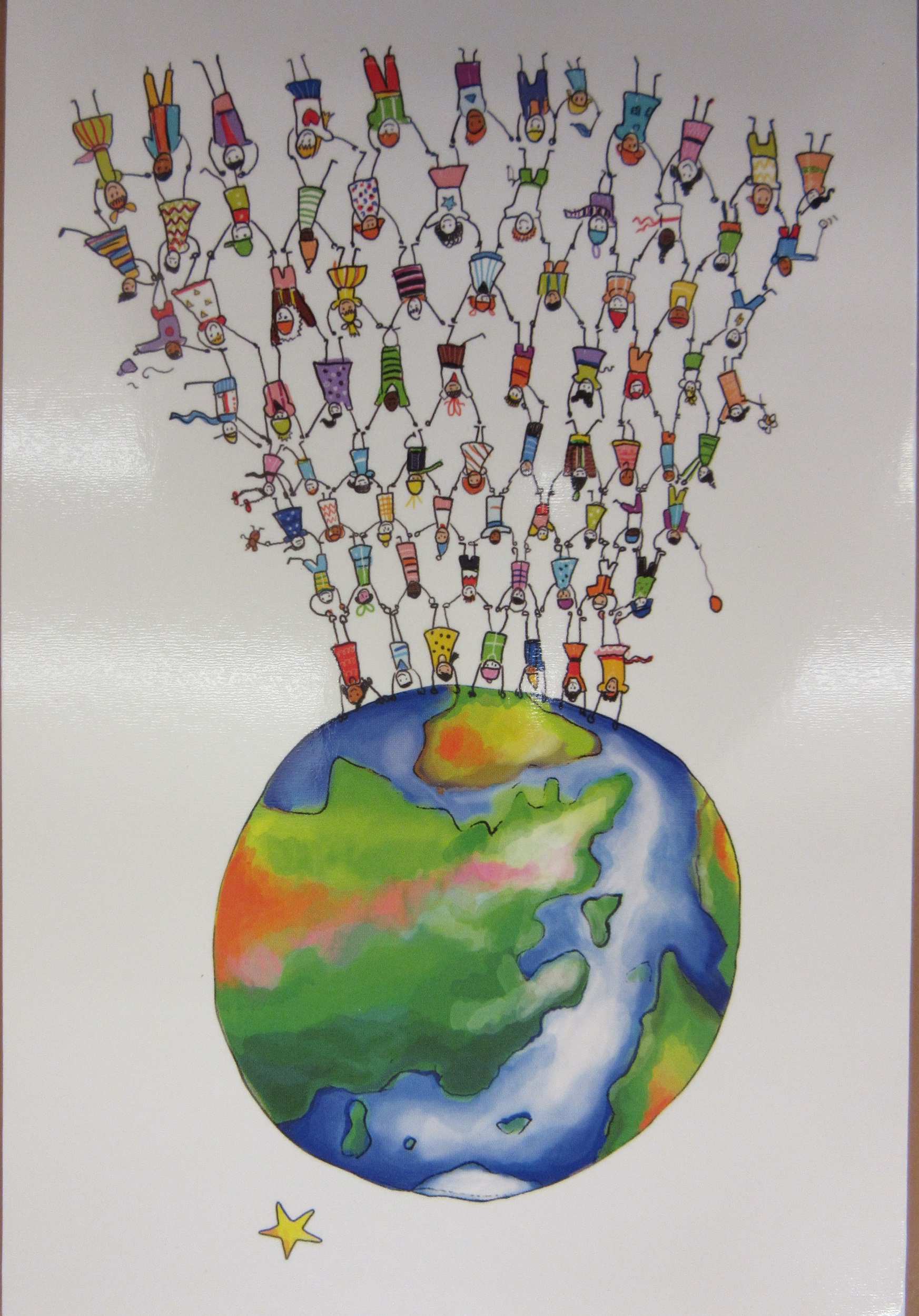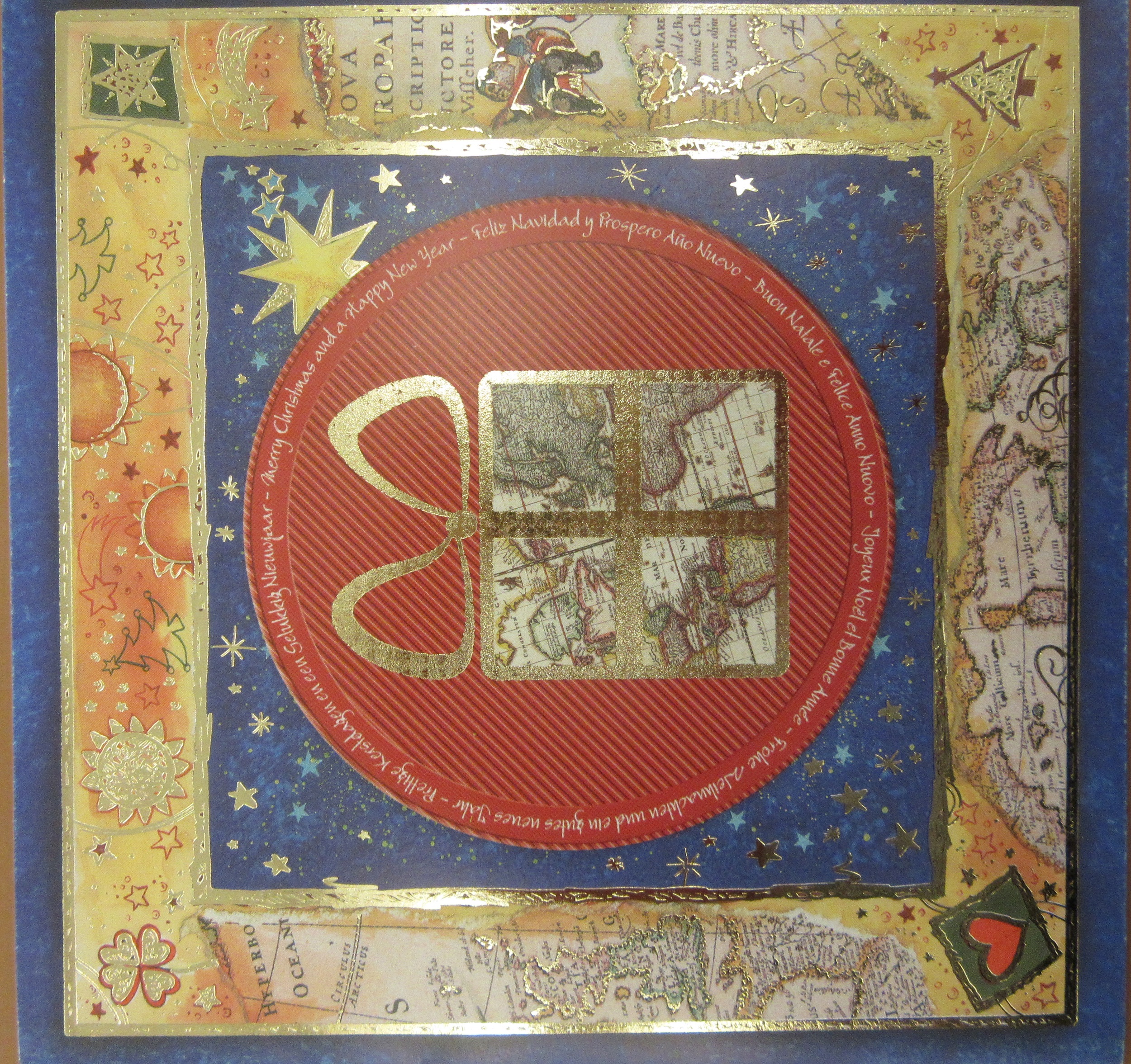 Few people can have more need of a map than Father Christmas. Who else travels the World, at night, visiting every house in every city, town and village? Who else does this but once a year, a long enough gap to forget which turn to take, which lane to go down? Who else makes these journeys on a sleigh drawn by 8 reindeer with no sat-nav, no googlemaps on a smart phone?
Few people can have more need of a map than Father Christmas. Who else travels the World, at night, visiting every house in every city, town and village? Who else does this but once a year, a long enough gap to forget which turn to take, which lane to go down? Who else makes these journeys on a sleigh drawn by 8 reindeer with no sat-nav, no googlemaps on a smart phone?
To celebrate a cartographic Christmas here’s a selection of map-themed cards collected by map staff at the Bodleian in recent years.
Here’s a card with an old map underlying the Christmas theme, showing the type of map that Santa might have used in days gone by.
Has there ever been a more sampled map than the classic London Underground map? Here’s two cards on the theme
We have Henry Cole to thank for Christmas cards. The first director of what would become the Victoria and Albert Museum commissioned the artist John Callcott Horsley to design the first card in 1843, with a thousand copies printed off and sold under his pseudonym Felix Summerly. Cole was also involved in the setting up of the Penny Post and is credited with designing that most iconic of stamps, the Penny Black. Christmas cards form part of the John Johnson Collection here at the Bodleian, one of the most important collections of ephemera in the World. Find out more about John Johnson, including finding aids, catalogues and blogs here.
A blog on Christmas cards written by the Librarian of the John Johnson Collection Julie Anne Lambert can be found here and more blogs on Christmas ephemera in the collection can be found here . Amongst the treasures held at the Bodleian are original pieces by J.R.R. Tolkien, some of the Father Christmas letters that Tolkien sent to his children can be found here and here
There is a lovely map of Santas throughout the World published in the 1950s by the General Drafting Company which can be found here Vintage Map Shows Santa’s Journey Around the World | National Geographic and of course, there’s the famous NORAD tracking Santa site Official NORAD Tracks Santa (noradsanta.org)
Who doesn’t believe? Happy Christmas everyone









